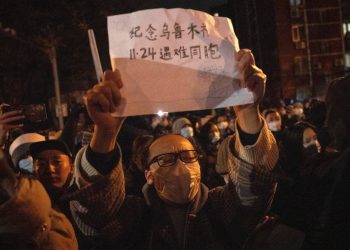Human Lives Human Rights: In early October three reports were presented to the 75th UN General Assembly on how the impact of COVID-related social isolation and restrictions on movement, coupled with economic insecurity and lost livelihoods, significantly increased women and girls’ vulnerability to violence.
The drivers of trafficking in women and girls intensified as a result of the COVID-19 crisis.
A study released by the United Nations Office on Drugs and Crime (UNODC) in July last year revealed how traffickers took advantage of the global crisis, capitalizing on peoples’ loss of income and the increased amount of time both adults and children were spending online.
Earlier, the Secretary-General’s report on trafficking in women and girls (A/75/289) noted that 47 million more women and girls will be pushed below the poverty line as a result of the COVID-19 crisis and this greater vulnerability may increase their risk of trafficking.
Women and girls represent 72 per cent of all trafficking victims globally, and 77 per cent of detected female victims are trafficked for the purpose of sexual exploitation.
While it should have been safe to assume that restrictions on movement and closed borders would prove to be a barrier for traffickers, it has only provided them with the opportunity to innovate.
Due to COVID-19, two-thirds of frontline trafficking workers have reported seeing an increase in online recruitment by traffickers for the purposes of sexual exploitation online, including through webcam and forced online pornography, and Europol has documented “increased online activity by those seeking child abuse material,” since the crisis began.
Trafficking is a global problem that transcends borders and is often a crime just out of reach of national law enforcement agencies, especially when it moves to the online space. The only way to stop trafficking in women and girls is prevention, which requires changing cultural norms and practices that objectify, debase and control women’s and girls’ bodies.
Reducing the demand for sexual exploitation requires challenging harmful masculinities and ideas of male entitlement to women’s bodies, and here we can draw lessons from broader strategies to prevent violence against women. For instance, UN Women in Ecuador has developed a programme on non-violent masculinities targeting young men as part of its efforts to prevent trafficking in women and girls.
Generally, prevention has been focused on awareness raising of trafficking, rather than addressing the gendered root causes, but now is the time to scale up our prevention strategies as well as adjust them to our new COVID-19 world. What the two years has shown us is that there are no obstacles too great for traffickers to overcome, so we must reduce the demand at its source.


















